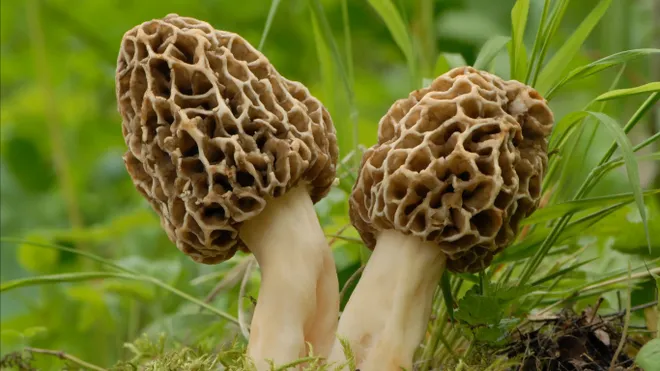What is trypophobia? Here's why some people are terrified of clusters of holes
Do sponges make you feel afraid, anxious or disgusted? How about honeycombs? Or strawberries?
If so, you might have trypophobia − the fear of clusters of small holes. Though rare as far as phobias go, this particular one can still be severely debilitating, driving some people to avoid any situations in which they might encounter patterns of tiny circles. Sarah Paulson portrayed a woman struggling with trypophobia in "American Horror Story: Cult" in 2017.
"To be a phobia, it needs to substantially interfere with your functioning, and the person usually knows that it doesn't make sense," says Philip Pierce, a licensed clinical psychologist who has treated clients with trypophobia. "It's a real fear, and they're not faking or anything, and it's very uncomfortable, and it can affect someone's life in lots of significant ways."

What's so scary about clusters of holes?
As with other phobias, psychologists believe trypophobia may have evolutionary origins.
"There's some thought that these things come from some evolutionary fears, like fear of heights is real danger," Philip says. "Here, the repetitive patterns could be from lizards and snakes and things like that, which can be poisonous and dangerous."
Other dangers in nature that involve clusters of holes include beehives and poisonous berries.
Kevin Chapman, a licensed clinical psychologist and the founder and director of The Kentucky Center for Anxiety and Related Disorders, says up to to 19% of people struggle with a phobia. Less than roughly 2%, he estimates, have trypophobia, which is rare.
Still, trypophobia can wreak havoc on the lives of those who do have it. Philip recalls treating one client with trypophobia who refused to go outside, for fear of encountering lizards or snakes. Another client with trypophobia couldn't stand to be around strawberries or raspberries, which became an issue at restaurants.
Something doesn't have to make you afraid in order to be a phobia either; it can also trigger disgust.
"In the case of this phobia, there's fear, there's anxiety, and there's oftentimes disgust," Chapman says. "Disgust is a very important emotional experience that many times people forget about with certain types of phobias."
More:More Americans than ever are afraid of the dark, experts say. Here's why.
How to treat trypophobia
If you struggle with trypophobia to the point where it's taking a significant toll on your life and wellbeing, Chapman and Pierce recommend seeing a qualified therapist.
One method employed by mental health professionals to treat phobias is exposure therapy.
"Treatment often involves doing things a little bit that you don't want to do, so it is helpful to have a professional involved," Philip says.
By gradually acclimating someone to their phobia, exposure therapy aims to show the client that the thing causing them distress is actually harmless.
"The gold standard treatment is cognitive behavioral therapy, particularly exposure therapy, so I want people to know that there's hope," Chapman says. "Exposure requires us to create a menu of situations that involve a cluster of small holes, and we confront those images, the sensations in our body attached to it, places where it occurs."
If you do struggle with trypophobia, or any phobia for that matter, know that you're not alone.
"Fifty percent of the population experiences what we call subclinical fear, so it is very common to experience these sort of reactions," Chapman says. "Be very sympathetic and compassionate for people who have this phobia but also encourage them that there is help available."
Read this next:What is emetophobia and why is it getting so much attention on TikTok?
Disclaimer: The copyright of this article belongs to the original author. Reposting this article is solely for the purpose of information dissemination and does not constitute any investment advice. If there is any infringement, please contact us immediately. We will make corrections or deletions as necessary. Thank you.







